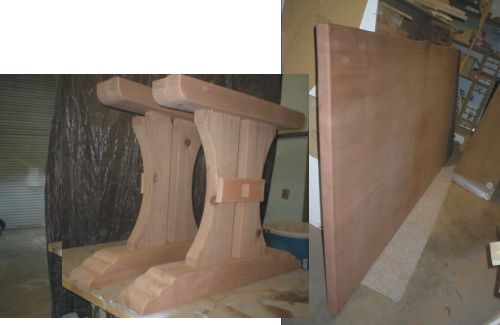Question
We are making a dining table for a customer, library style. The material is old growth redwood. The top is 43" x 100" x 2" solid, one piece, no glue up, no knots, no cracks, slight checking on the ends. The legs are milled from old timbers reclaimed from a bridge. Everything is mortise and tenon joinery with square pegs (walnut) through the joint.
I plan on mortising the leg assembly into the top. I will be making the mortise into the underside of the table. 3/4" deep. Matching tenon on the leg assembly will fit loose on the length, 1/8". I plan on cutting a dado into the side of the leg assembly 3/8" deep x 1/4" on both sides of the leg. This is for walnut clips that will screw into the bottom of the table top and set in the dado. I plan on a good snug fit with no glue so the top can expand and contract separate from the base assemblies. Any advice would be appreciated. I'm always learning.
Here is a photo of the leg assemblies. Walnut pegs haven't been cut yet. The square hole in the small piece will receive the tenon of the stretcher (?) and will also be pegged with walnut.

Forum Responses
(Furniture Making Forum)
From contributor J:
Sounds pretty good to me. I would like to see the tenons on the legs with a little more room for movement on a piece this wide. I would also consider one or two battens to help keep the top flat. You can fasten them with clips on both sides or screw them on with elongated holes everywhere but the center. If you are going to finish the table, both sides of the top should receive the same amount of finish to control moisture absorption and release.